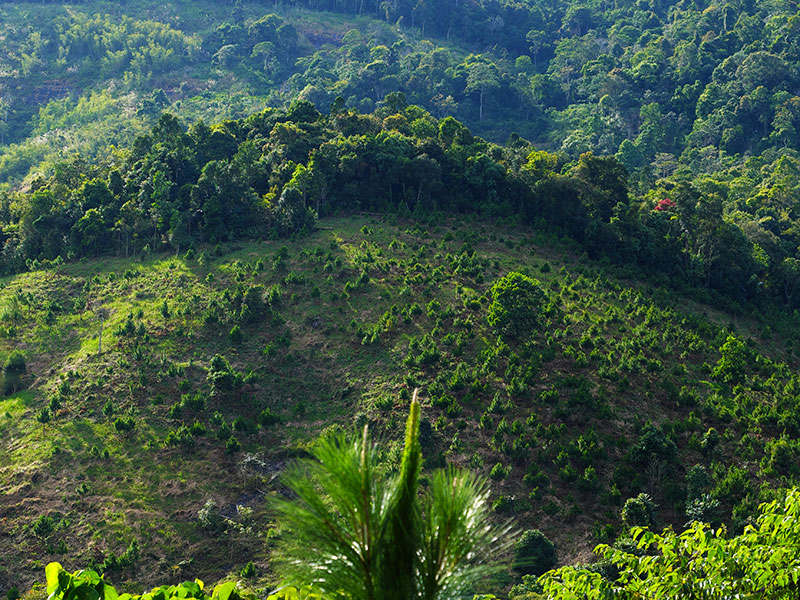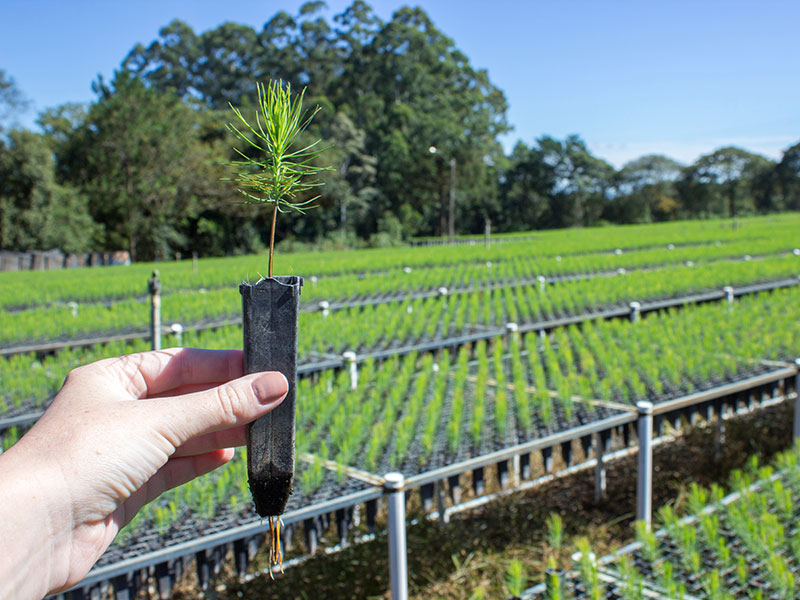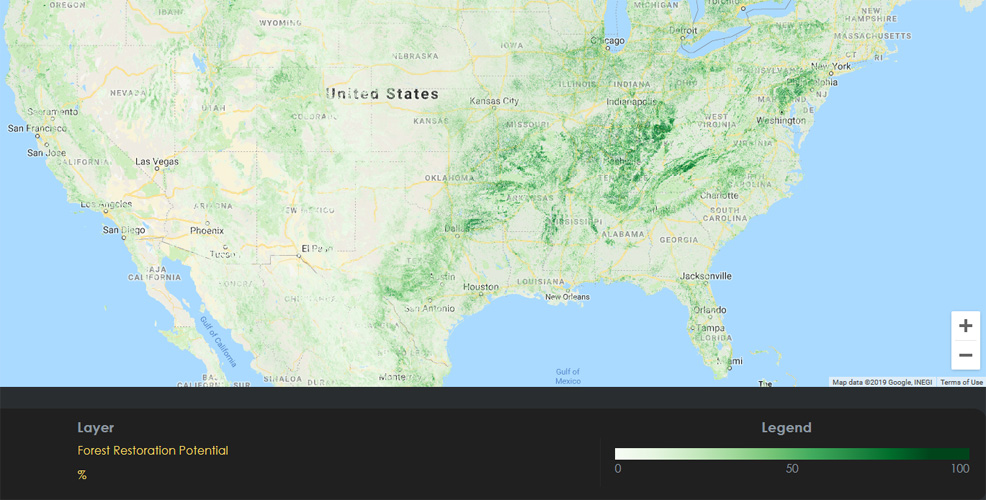
6th July 2019 Reforestation could capture two-thirds of CO2 emissions A new assessment of tree cover has found 0.9 billion hectares of land available for planting forests. This could store 205 gigatonnes of carbon or about two-thirds of the extra carbon that remains in the atmosphere as a result of human activity since the Industrial Revolution.
Restoration of the Earth's forests is the most effective solution to climate change available today and has the potential to capture two-thirds of human-made carbon emissions – according to landmark research by the Crowther Lab, ETH-Zürich, published yesterday in the journal Science. The study is the first to quantify how many trees the Earth can support, where they could exist and how much carbon they could store. It used nearly 80,000 high-resolution satellite photographs, combined with machine learning to calculate 10 soil and climate variables. The researchers found that there is potential to increase the world's forest land by a third, without affecting existing cities or agriculture, regrowing trees over an area the size of the USA or larger than Brazil. Once mature, these new forests could store 205 billion tonnes of carbon, about two-thirds of the 300 billion tonnes of extra carbon that remains in the atmosphere as a result of human activity since the Industrial Revolution. The study, led by Dr. Jean-Francois Bastin, suggests there is further potential to regrow trees in croplands and urban areas, highlighting the scope for agroforestry and city trees to play a major role in addressing climate change.
However, the research paper warns that the need for action is urgent: the climate is already changing and every year reduces the area of land available to support new forests. Even if global warming is limited to 1.5°C, the area available for forest restoration could decline by around 223 million hectares or nearly a quarter by 2050. "We all knew restoring forests could play a part in tackling climate change, but we had no scientific understanding of what impact this could make," said Professor Tom Crowther, senior author. "Our study shows clearly that forest restoration is the best climate change solution available today and it provides hard evidence to justify investment. If we act now, this could cut carbon dioxide in the atmosphere to levels last seen almost a century ago. "However, it will take decades for new forests to mature and achieve this potential. It is vitally important that we protect the forests that exist today, pursue other climate solutions, and continue to phase out fossil fuels from our economies in order to avoid dangerous climate change." The future scenarios proposed by the UN's Intergovernmental Panel on Climate Change propose that limiting climate change to 1.5°C will require up to an extra billion hectares of forest by 2050, even while radically reducing emissions from energy, transport and so on. The new study allows this claim to be evaluated for the first time – showing where these trees could be restored and how much carbon they can capture. It confirms that this scenario projection is "undoubtedly achievable under the current climate".
More than half the total potential for reforestation can be found in just six countries: Russia (151 million hectares); the United States (103 million hectares); Canada (78.4 million hectares); Australia (58 million hectares); Brazil (49.7 million hectares); and China (40.2 million hectares). A tool on the Crowther Lab website enables users to look at any point on the globe, and find out how many trees could grow there and how much carbon they would store. It also provides lists of forest restoration organisations. "Our study provides a benchmark for a global action plan, showing where new forests can be restored around the globe," said Dr Jean-François Bastin, the lead author of the study. "Action is urgent and governments must now factor this into their national strategies to tackle climate change." "Although government action is essential to make the most of this opportunity, this is a climate solution we can all get involved in and make a tangible impact," added Professor Crowther. "You can grow trees yourself, donate to forest restoration organisations or just invest your money responsibly in businesses which are taking action on climate change." "This new research demonstrates how much natural capacity our planet has to grow and sustain additional forest; now, the challenge is to understand how and where we can accelerate this implementation, whilst still feeding our growing global population," said Will Baldwin-Cantello, Global lead on Forests at WWF. "Tackling the climate crisis and restoring our forests requires unprecedented levels of co-operation and support at both a local and global level, supported by initiatives such as Trillion Trees that are accelerating delivery on the ground. We have the solutions at our fingertips; we just need the global political will to fight for our world."
Comments »
If you enjoyed this article, please consider sharing it:
|










